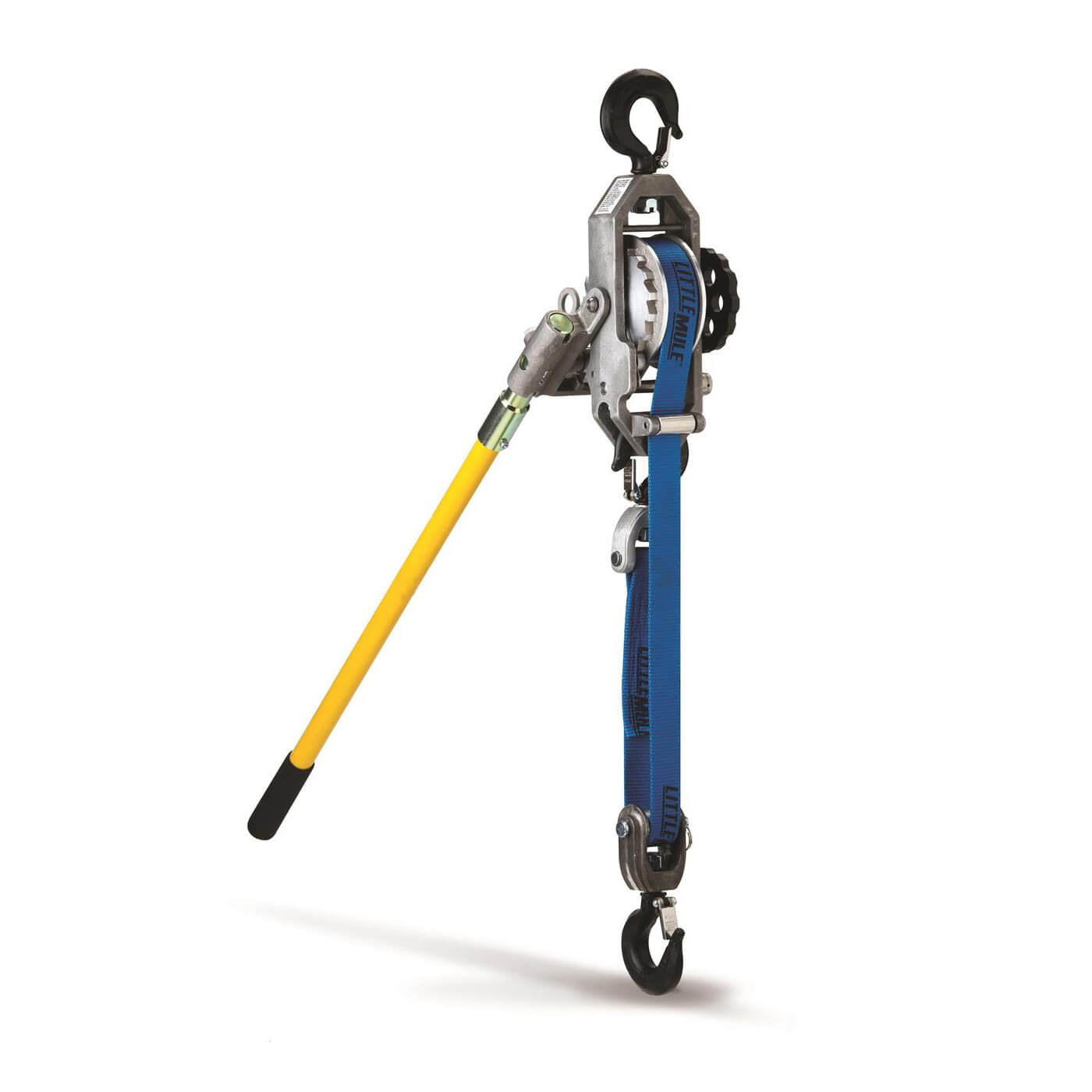The Little Mule Strap Hoist is the preferred hoist by utility industry professionals. For many years, people like you have been relying on this strap hoist to get the job done and stay safe. Whether repairing power lines after a storm or performing routine maintenance, you can count on the Little Mule Strap Hoist.
Applications
- Sagging Using a Dynamometer
- Dead-Ending
- Splicing
Features
Non-Conductive Handle
This hoist is made with a fiberglass handle that has polyester webbing. This adds non-conductive material when using proper hotline handling techniques.
Hooks and Gate Latches
All hooks swivel 360°. You can select which hook type you want.
Safe Design
This strap hoist uses thumb screws to secure the handle. This means the handle won’t come loose while you’re operating it.
Lightweight
Made with cast aluminum frames and has corrosion-resistant stainless steel springs and shafts.
4:1 Design Factor
Meets or exceeds minimum 4:1 design factor and all requirements for ASME/ANSI Standard B-30.21. All units are tested at 125% of rated load.



Reviews
There are no reviews yet.